Fire Protection for Hangars - High Expansion Foam Systems
- Martin Ramos
- Sep 13, 2021
- 5 min read
Updated: Sep 14, 2021
Just like any other buildings or structures, they require some form of fire protection. A commonly used system in buildings like schools, hospitals, offices, etc. are sprinkler system and inert gas system. But for hangars (warehouses where aircrafts or spacecrafts are stored), we would specifically use a High Expansion Foam System. Simply because hangars are incredibly huge and foam can quickly cover the huge area hangars occupy. So, it is able to put out fire effectively & efficiently. Foam can be easily made in large quantities with the use of three materials. That being Air, Water, and a Foam Mixing Agent (which can come from various materials to make multiple types). Now let's dive deep on what you need to know about the system.
Before we go further in the topic, we need to briefly discuss the Fire Triangle and The Fire Tetrahedron. When combustion happens there are three components that need to be present in order for fire to ignite and sustain itself, which are:
· Fuel – to vaporize and burn.
· Oxygen – to combine with fuel vapor.
· Heat - to raise the temperature of the fuel vapor to its ignition.
There are two important factors to remember when preventing and extinguishing fire:
1.) If any of the three components are missing, then a fire cannot start.
2.) If any of the three components are removed, then the fire will go out.

When it comes to the Fire Tetrahedron:
Solid figure with four triangular faces.
Shows the chain reaction and each face touches the other three faces.
The basic differences – illustrate how flaming combustion is supported and sustained through the chain reaction of the oxidation process.
Now with that out of the way, let’s define what a High Expansion Foam System is.
High-expansion foam generators deliver high- or medium-expansion foams. Water, electric, or diesel powered, high-expansion foam generators are primarily used for firefighting in aircraft hangars and other structures like chemical storage areas, in mines, on ships and vehicles, and on military installations.
Including:
- Flammable liquid storage areas
- Hazardous waste storage areas
- Ship holds
- Engine rooms
High Expansion is mostly used on dry product fires or enclosed areas to drawn large volume surfaces and fill cavities such as warehouse, cellars, aircraft hangar or engine/pump rooms aboard ships. Less water used produces a very large amount of foam in a short time, resulting in fire extinguishment by smothering.
Everything about Foam:
From the previously mentioned materials of Water, Air, Foam mixing agent. Foam is formed by mixing the foam making agent with water to create a foam solution. After that, foam bubbles are created by introducing air into the foam solution through aerating devices. And two of the most common concentrations are 3% and 6% foams.

How is Foam Generated?
Here is an image and step by step process of how a Proportioner works. When generating foam, a constant of foam concentrate is added to water by means of a proportioner. The resulting mixture of water/foam concentrate is expanded with air in the foam generator.
How does Foam Extinguish Fire?
Foam extinguishes fire in multitude of ways creating an effect that disables the fires property to persist and sustain itself. Which is the following:
Separating Effect
- The closed foam cover separates the combustion zone from the ambient air.
Cooling Effect
- The flammable material is cooled down by the water.
Cover Effect
- The closed foam cover stops any further gas evaporation from the burning materials, i.e., flammable gases foam forms a blanket on the surface of flaming liquids.
Repression Effect
- Flooding spaces, channels, plant parts, etc. with high or medium expansion foam represses the atmospheric oxygen and flammable gases necessary for the combustion process.
Insulation Effect
- Foam insulates flammable material which has not yet caught fire.
What is Mechanical Foam?
Mechanical foam is hydrolyzed protein material, made up of closely formed bubbles having water retention properties and stability, coupled with its ability to float readily on the lightest flammable liquids, makes it an excellent extinguishing agent for flammable liquid fires.
Types of Mechanical Foam
§ Protein Foam
Produced by the hydrolysis of waste protein material, such as protein-rich animal waste and vegetable waste that is hydrolyzed.
§ Fluoroprotein Foam (FP)
Formed by the addition of special fluorochemical surfactants with protein foam.
§ Film Forming Fluoroprotein Foam (FFFP)
Combination of fluorochemical surfactants with protein foam release a film on the surface of the hydrocarbon.
§ Aqueous Film Forming Foam (AFFF)
- Combination of fluorochemical surfactants and synthetic foaming agents
- Film spreads rapidly causing dramatic fire knockdown.
§ Alcohol Resistant-Aqueous Film Forming Foam (ARAFFF)
- Combination of synthetic stabilizers, foaming agents, fluorochemicals and alcohol resistant additives.
- Offers good burn back resistance, knockdown and high fuel tolerance on both hydrocarbon and alcohol fuel fires.
§ Synthetic Foam
- Made up of alkyl sulfonates.
- It foams more readily than the proteins and requires less water important where the water supply is limited.
These are the type of foams that can be used in a High Expansion Foam systems and can also be used in fire extinguishers.
Advantages of Foam?
· Effective smothering agent and provides cooling effect.
· Sets up a vapor barrier that prevents flammable vapors from rising.
· Can be used on Class “A” fires because of its water content.
· Effective in blanketing oil spills
· Uses water economically.
· Most effective extinguishing agent for fires involving large tanks of flammable liquids.
· Can be made with fresh water or seawater, and hard or soft water.
· Does not break down readily and extinguishing fire progressively.
· Foam stays in place, covers and absorbs heat from materials that could cause re-ignition.
· Foam concentrates are not heavy, and foam systems do not take up much space.
HIGH EXPANSION FOAM GENERATOR SYSTEM
What is High Expansion Foam System?
High-expansion foam generator deliver high- or medium-expansion foams. Water, electric, or diesel powered, high-expansion foam generators are primarily used for firefighting in aircraft hangars and other structures like chemical storage areas, in mines, on ships and vehicles, and on military installations.
· Flammable liquid storage areas
· Hazardous waste storage areas
· Ship holds
· Engine rooms
High Expansion is mostly used on dry product fires or enclosed areas to drawn large volume surfaces and fill cavities such as warehouse, cellars, aircraft hangar or engine/pump rooms aboard ships. Less water used produces a very large amount of foam in a short time, resulting in fire extinguishment by smothering.
FOAM GENERATOR
· Delivers large quantity of expanded foam by blowing air through a screen.
· High expansion ratio requires little water.
To summarize, High Expansion Foam Systems are one of the best to use for aircraft hangars due to its effectivity and low usage of water to produce foam. And ease of clean up since most foam can be disposed of via storing the remains in a pit.



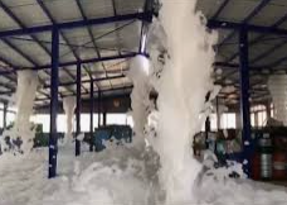
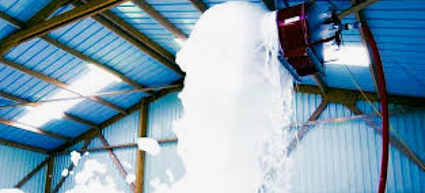


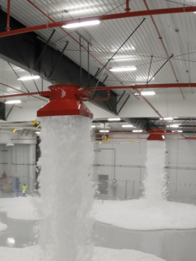
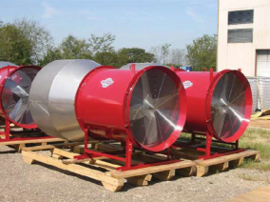
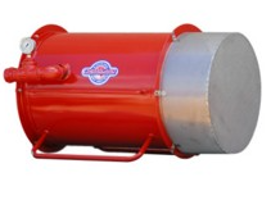
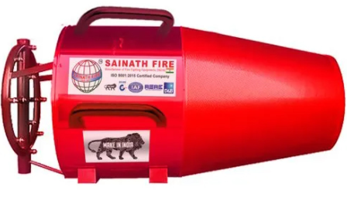

Comments